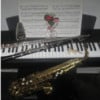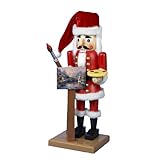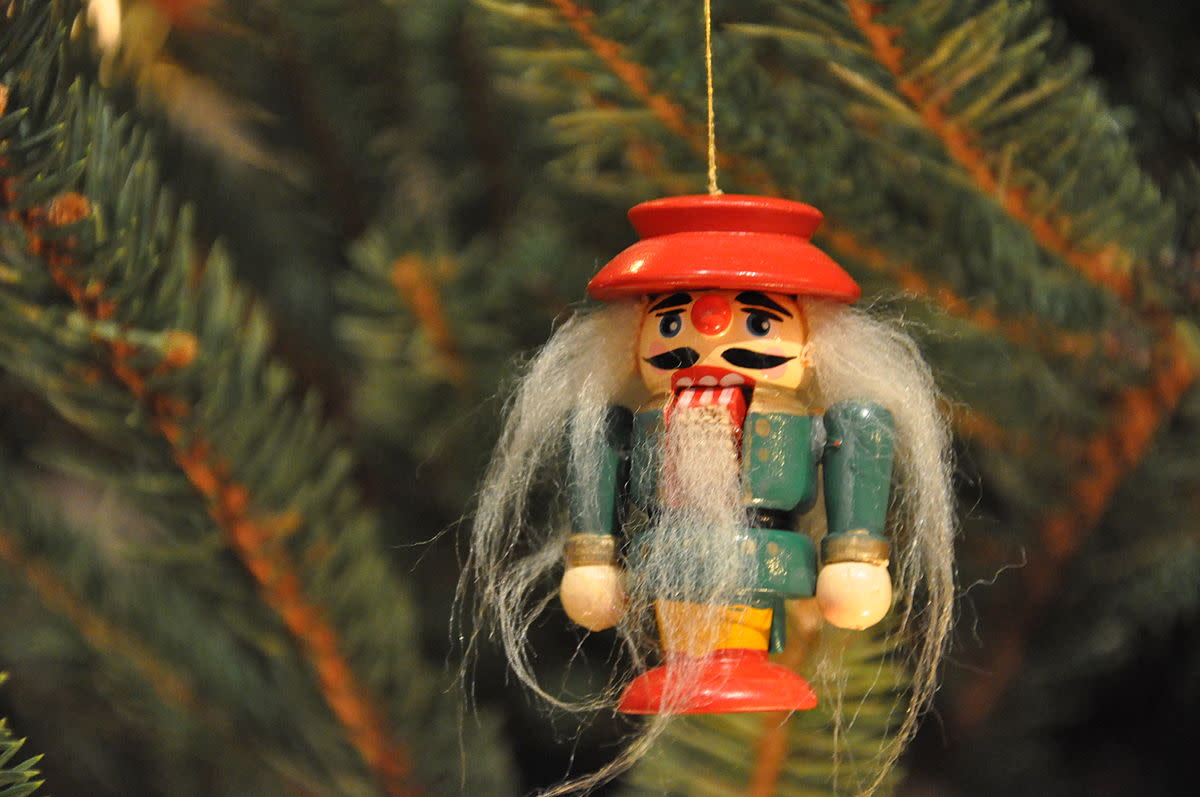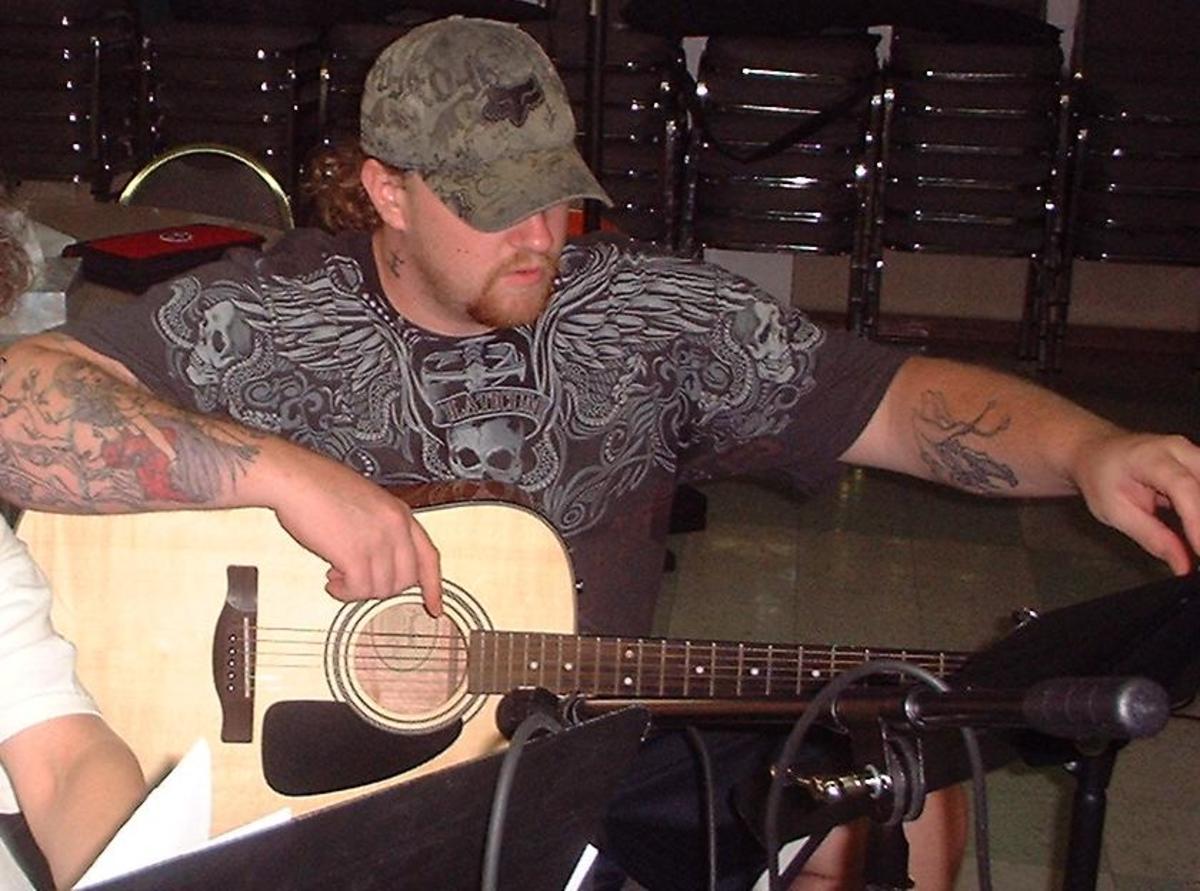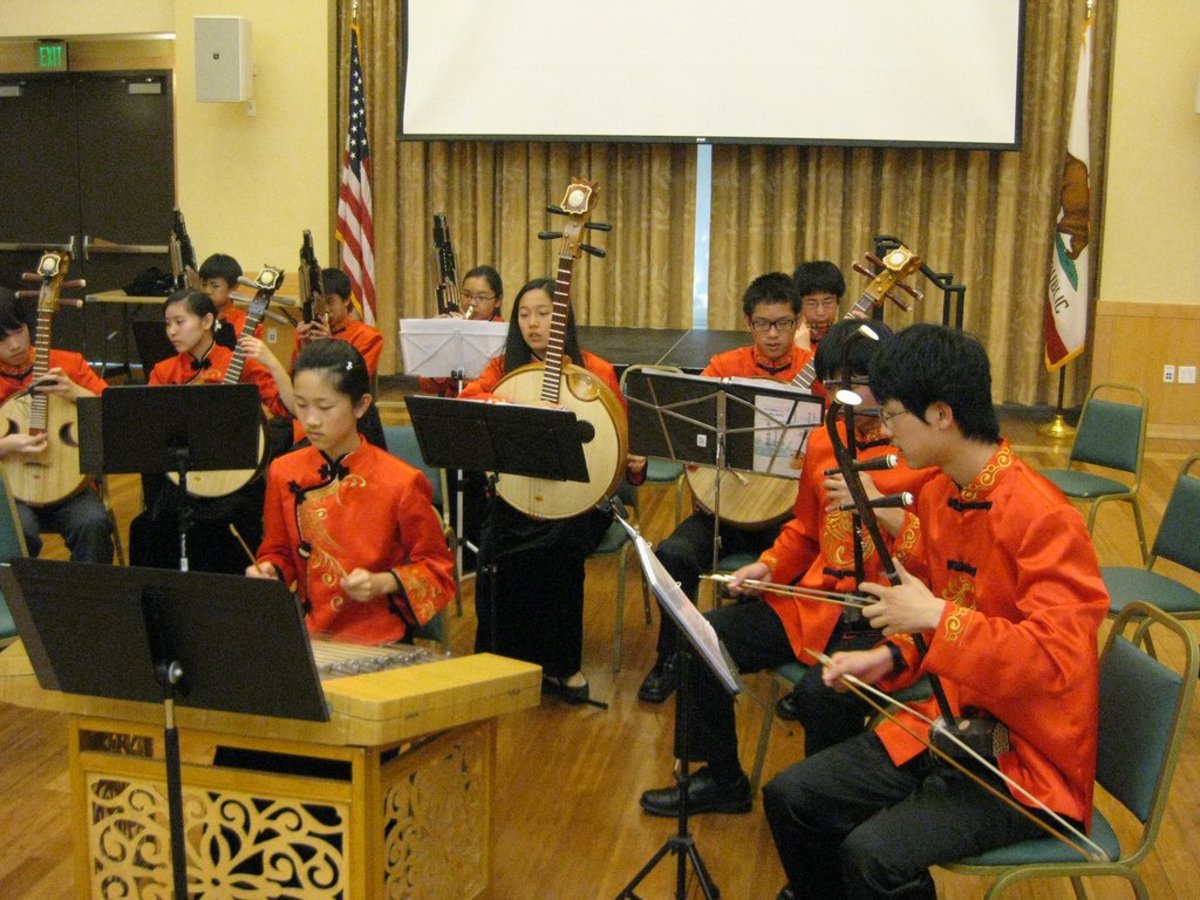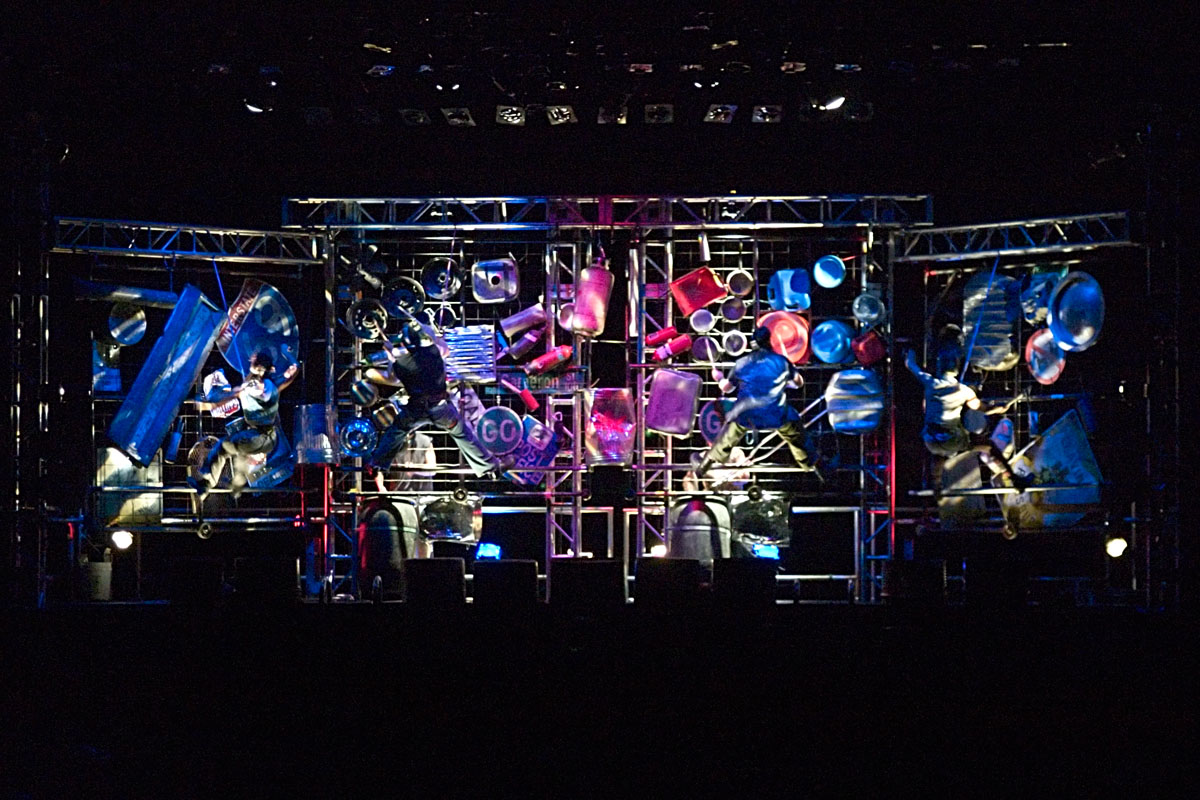March from the Nutcracker Ballet
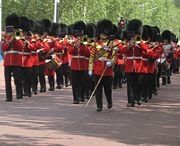
Nutcracker Prince Leads Marching Soldiers!
An army of toy soldiers march as they prepare to follow their Nutcracker Prince in defending a beautiful young girl against the evil Mouse King! I bet you can already hear the music accompanying this scene from ...
The Nutcracker Ballet by Peter Tchaikovsky!
(Actually, the March music comes during the party scene of the ballet, but many think of it in relationship to the dear Nutcracker.) Come enjoy the March from the ballet. What is a march anyway, and what can we learn about music from it? Whether you are a musician or not, this easy lesson plan (which is part of an entire Nutcracker Unit) will take you through this incredible piece of music step by step to learn about the orchestra, note values, rhythms, written music, articulations, sounds, and conductors.
Welsh Guards Band on the Mall" Graphic from Wikipedia
Nutcracker Lapbook & Notebook Materials - What is a lapbook?
These materials were created for students and teachers and are free for anyone to use! All I ask is that you could leave me a message to know how you used the materials and / or what I could add or change to make them more helpful to others. If you would like to post a picture of your lapbook or notebook that you create, just contact me and I will happily do so to one of the pages of the unit. :D
The notebook and lapbook materials are stored at my blog, Joyful Songs. Two stars and the number of the suggested mini will be placed at each section in order to know which one to use for that section. i.e. **3
- Vocabulary Flash Cards - scroll down in the file to find words printed on cards or blank cards. There are two styles. These may be used as traditional flashcards, or you may want to make a matching game with a word on one card and the definition on another. Students mix them up and try to match correctly.
- Vocabulary Flash Card Pocket for Storage - to store your flashcards when not in use.
- Vocabulary Notebook Page - a blank page to write down terms or notes.
- Other Nutcracker & Ballet Notebook Pages for any notes you want to take.
- What is form in music? Mini Book
- What is a musical march? Mini Book
- Time Signature, Measure, Bar Lline, Double Line Mini Book
- Treble Clef & Bass Clef Mini Books - draw in symbols and meanings.
- The Musical Staff & Pitches Mini Book - draw in a staff, space notes (FACE), and line notes (EGBDF) which are used for the treble clef notes.
- Instrument Tab Mini Book - this has pages for all the instrument families so you may use it throughout the entire Nutcracker Unit.
- Dynamics Mini Book
- Tempo Accordion Book
- Flash Cards ~ for reading notes G, A, and B on the treble staff, rhythmic values, and recorder fingerings.
- March Music ~ use for playing the march on recorder.
- Musical Form Game - cards and game storage pocket.
- Score Pocket - use for storing any sheet music you print out and use for musical analysis.
- String Card Game - Use for flashcards, 'Go Fish', 'Concentration' Style Matching Games, or ?
- String Instrument Mini Books - violin, viola, cello, bass, and harp.
- Stringo Bingo Game - a game I created with review questions about the string family.
- String Family Lapbook Unit - huge unit about all string instruments including lesson plans, research, information, videos, links, games, webquests, and more.
- String Family Lapbook Components - to correlate with the above lessons.
Nutcracker Videos
There are several interpretations of the piece. I think it is fascinating to see how different choreographers, directors, and animators think about the same piece of music!
Introduction to the March
Musical Form & Movement
Quietly sit listening to the March from a recording or the video above. If you have not previously done so, you may want to introduce students to ballet, Peter Tchaikovsky, and the story of the Nutcracker. The Nutcracker Unit Introduction Page contains materials for teaching the background and additional information about these topics.
While listening to the piece a second time, help the children to identify the two main musical themes in the March. Ask them to listen for a section that sounds stiff and ridged versus a section which sounds like it is bouncing or galloping. I like to have students do different actions with their bodies to show where the sections change. For example, they may stand during the A = "soldier" theme, and sit during the B = "horse" theme.
Music & Movement Activity ~ I only do this when I feel there is ample room to move about safely with the amount of children in the class and their behavior. The movement activity may be altered in many ways to make it fit the space and students you have. Students usually have fun with this and it forces them to listen carefully to the section changes.
'A' Section -March like toy soldiers with stiff bodies, arms to the side, and high lifted straight legs to the steady beat.
'B' Section - gallop like soldiers on horses to the dotted eighth and sixteenth note patterns (like Fritz in the story on his toy horse).

Musical Form
What is musical form?
Musical form is the way a piece of music is put together. Each unique section is labeled a letter such as "A", "B", "C", and so on. The amount of sections, the order the sections are placed in, and their repetitions all determine the form the piece is based in. There are set forms and many variations of each.
**1,2,3 Vocabulary Words
**4 Notebook Page for taking notes
**5,6 Form & March Mini Books
Definitions from: Dictionary.com & Essentials of Music
form ~ noun
The structure or shape of a musical work, based on repetition, contrast and variation; the organizing principle in music. Binary and ternary are basic forms, while more complex forms include sonata-allegro, rondo, minuet and trio, theme and variations, ritornello, and fugue.
binary form ~ adjective
made up of two parts or sections; twofold; double
ternary form ~ adjective
made up of three parts or sections; threefold; triple
march ~ noun
1. a piece of music with a rhythm suited to accompany marching
2. Music A composition in regularly accented, usually duple meter that is appropriate to accompany marching
march ~ verb
1. walk steadily and rhythmically forward in step with others.
2. to begin to move in such a manner
What is the form of the Nutcracker March? Listen and try to write down the number and order of the sections. AB AB AB (Interlude) AB AB
Another Nutcracker March Interpretation
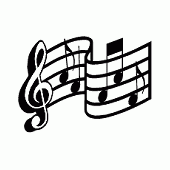
Music Theory in the March
Comprehensive Musicianship
Look at the March Music (see below for printables and video sheet music). Point out the music elements on the page - staff, treble clef, bass clef, time signature / meter, measure, bar line, double bar, repeat sign, note values, pitches, accent, and staccato. Definitions are in the next box. With younger students, I would just mention the names of each with a brief explanation. Older students, especially if they play an instrument or sing, may want to dig deeper on each of these music theory concepts. Pick parts of the following online tutorial and music theory mini book that your child is ready for. This obviously could be spread over several lessons, or just one.
Reading Music ~ a thorough collection of materials I listed for teaching very beginning through advanced music theory so you may select what is best for your level students.
.
Music Theory Tutorial ~ a great step by step music theory tutorial with 46 lessons. Each lesson has several pages (click the small arrow in the middle of the page) - very comprehensive!
Sheet Music for the March ~ free printable sheet music for use in studying this movement of the nutcracker. This 3 page arrangement is for piano.
Tchaikovsky at Making Music ~ read a Tchaikovsky biography, print out several of his pieces (including the March), complete a wordsearch, write about the composer, or watch a video at the Making Music website.
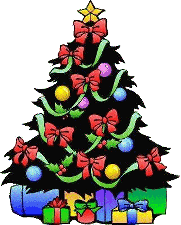
Music Vocabulary
The Overture page contains lesson plans, definitions, and lapbook materials for time signature, accent, staccato, measure, bar line, double bar, note values, "Count the Beats" Game, and flash cards / notebook pages for vocabulary.
**1,2,3 Vocabulary Words
**4 Notebook Page for taking notes
**7 Measure, Bar Lline, Double Line Mini Book
**8 Treble Clef & Bass Clef Mini Books
**9 The Musical Staff & Pitches Mini Book
**16 Music Score Pocket (storage of your sheet music)
Definitions from YourDictionary.com
meter ~ noun
1. rhythm in verse; measured, patterned arrangement of syllables, primarily according to stress or length
2. the basic pattern of beats in successive measures of a piece of music: it is usually indicated in the time signature
time signature ~ noun
Music: a sign consisting of one number over another, esp. after the key signature, indicating the unit of measurement and the number of beats in the following measure or measures (Ex.: 3/4 means three quarter-note beats); also, a nonnumerical sign used in this way (Ex.: C is often used instead of 4/4)
staff ~ noun
Music: the horizontal lines on and between which notes are written or printed: the placement of a note on the staff indicates its pitch
pitch
1. Music Acoustics - that element of a tone or sound determined by the frequency of vibration of the sound waves reaching the ear: the greater the frequency, the higher the pitch
2. noun -a tone used as a standard of pitch for tuning instruments
3. verb - to determine or set the key of (a tune, an instrument, or the voice)
measure ~ noun
1. a form of measuring
2. the notes or rests, or both, contained between two vertical lines on the staff
bar line ~ noun
The lines which divide a staff into measure used to assist in rhythmic counting
double bar ~ noun
Two lines after the last measure of a piece of sheet music to designate the end of the piece
repeat sign ~ noun
Two lines and two dots which signify a musician to repeat a section of a piece of music - looks similar to a double bar but dots may be on the left or right to enclose the repeated section.
treble clef ~ noun
1. a sign on a staff, indicating the position of G above middle C on the second line
2. the range of notes on a staff so marked
bass clef ~ noun
1. a sign on a staff, indicating the position of F below middle C on the fourth line
2. the range of notes on a staff so marked

The String Family
Listening Skills & String Instruments
Questions for students to improve auditory skills.
Tone Color Which instrument family do your hear most often? String, brass, woodwind, percussion, or keyboard? Find out more about the string family and write information in the string page of the Instrument tab book.
String Family Unit ~ The String Family Lapbook Unit contains everything for a complete unit study of orchestral and non-orchestral string instruments. You may wish to just pick one of the Children's orchestra sites to fill in the information, or add other activities, also.
**10 Instrument Tab Book - fill in the string page. There are pages for every instrument family to be completed in other lessons.
**17 String Card Game
**18 String Instrument Mini Books
**19 Stringo Bingo Game
**20 String Family Lapbook Unit
**21 String Family Lapbook Components
Tempo ~ What instrument do you hear with the fast ascending notes (going up)? Strings or woodwinds? Discuss musical terms for tempo (speed) in music. Musicians all around the world use Italian words for musical terms. Define allegro, moderato, and andante from vocabulary list. What is the tempo of the march?
Pitch ~ Review the staff, treble and bass clefs and notes on the staff. Maybe play a game or two from the Reading Music page. Listen to ascending and descending notes in the music. Discuss how the notes are written higher on the staff for the higher pitches, and written lower on the staff for lower notes. Remind them that treble clef is mostly for notes above "middle C" (the C closest to the middle of the piano), and bass clef is mostly for notes below "middle C".
Musical Ensembles ~ Is this ensemble of instruments a band or an orchestra? (Orchestra) Why? What is the difference? (Orchestras contain stringed instruments along with the others. Bands usually only have woodwinds, brass, and percussion.)
Meter / Time Signature ~ Review time signature from Overture lesson if you have done it. What is the meter of this piece? 4/4 or 3/4? (The March in in 4/4 time signature.) Be the conductor and conduct the orchestra with a 4 beat pattern!
Dynamics ~ Dynamics are the volume or loudness of audible sounds. Teach the Italian musical terms for loud (f = forte), medium (mf = mezzo forte), and soft (p = piano). Try singing a familiar song (like Jingle Bells) in different dynamics that you either call out for them or hold up signs for. What dynamics do you hear in the march?
Nutcracker by Thomas Kinkade
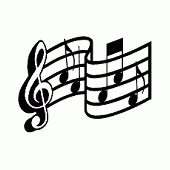
Music Vocabulary
The materials I created may be used with a few vocabulary words or may be added onto if you do future lessons of the unit. I included optional blank pages if needed.
**1,2,3 Vocabulary Resources
**11 Dynamics Mini Book
**12 Tempo Accordion Book
allegro ~ adjective, adverb = fast; faster than allegretto but not so fast as presto: often used as a musical direction
noun = an allegro movement or passage of a collection of musical pieces
Etymology: It = brisk, sprightly, cheerful
moderato ~ adjective, adverb
musical direction with moderation in tempo, medium speed
andante ~ adjective, adverb = moderate in tempo; slower than allegretto but faster than adagio: often used as a musical direction
noun = an andante movement or passage of a collection of musical pieces
Etymology: It, = to walk, to go about = walking speed
band ~ noun
1. a group of people joined together for a common purpose
2. a group of musicians playing together, esp. upon wind and percussion instruments
orchestra ~ noun
1. in modern theaters, the space in front of and below the stage, where the musicians sit in full orchestra pit
2. a.a usually large group of musicians playing together; often, specif., symphony orchestra
3. the instruments of such a group
forte ~ adjective, adverb = loud
noun = a forte passage of a piece of music
Etymology: It = fortis, strong
mezzo forte ~ adjective = medium; moderate; half
adverb = moderately; somewhat
Etymology: It = medius, middle
piano ~ adjective, adverb = soft(ly): often used as a musical direction
noun = a passage to be performed piano
noun = a large keyboard instrument, each key of which operates a small, felt-covered hammer that strikes and vibrates a corresponding wire or set of wires stretched on a metal frame that is enclosed in a wooden case of various forms = originally called the pianoforte because of it's ability to play forte or piano
Etymology: It = soft, smooth
View a Dance
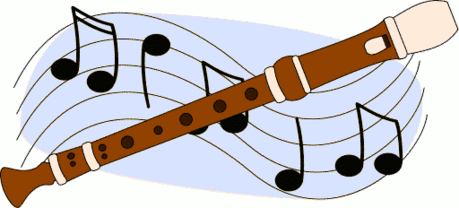
Note Reading & Instrument Playing
Reading Notes on the Staff ~ Motor Skills ~ Rhythmic Values
Upper Elementary - High School
Extra Activities
**13 Flash Cards for reading G, A, and B on the staff, rhythmic values, and recorder fingerings
**14 March Music for Recorder
Read Notes G, A, and B on the treble clef staff with flash cards or one of the online games listed above. Practice reading the notes from March Music.
Rhythmic Values ~ teach or review note values of half notes, quarter notes, and triplets with the flash card set. Locate the different note values on March Music - name and tell of their values. Clap the rhythms several times (do it with the recording if that is easier). Then clap the rhythms and say the names of the notes to that rhythm. This may take several repetitions. If the student(s) seems frustrated, just take a break for awhile and try again later.
Instrument Playing ~learn to play the notes on recorder. See the recorder fingering flash cards. Practice several times slowly over many days until able to play it with the recording.
Rhythmic Values ~ find dotted eighth and sixteenth note patterns on March Music. Read about, then count and clap the rhythm pattern. If you have sand blocks, percussion instruments, or homemade instruments, play along with the recording. Your student(s) can listen for accents and play a cymbal or other instrument along with.
When teaching group classes, I would play the piano part to the march and assign individual or groups of students to play the recorder, sand block, and cymbal parts with me.
Musical Arrangements
Compare & Contrast
Listen to other versions of the March, or versions by other performance groups to compare and contrast what students hear. One of my favorites to compare is a traditional orchestra version with Trans-Siberian Orchestra's "A Mad Russian's Christmas". Very different!
Is the tempo the same, faster, or slower? Are the i>dynamics louder or softer? Are the same instruments used, or did the group choose other instruments to play the parts? Is the form in the same order and number? Have any of the rhythms changed or are they the same? Which version do you like better? Etcetera ...
Trans Siberian Orchestra

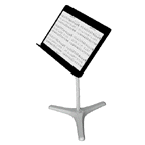
How did you do on the quiz? What was your score? Be honest!
March of the Tin Soldiers - Compare with Another Famous March
Nutcracker Recommendations from Amazon
Hope you had fun and learned some new things! Please leave a note so I may know how to serve the music education world better.
